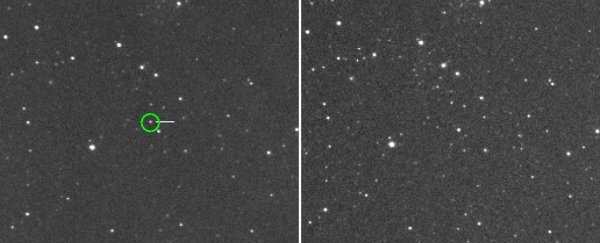According to reports in The Astronomer’s Telegram, a star in the region of the constellation of Cassiopeia has just gone nova, and the glow is still visible in the night sky. If you live in the Northern Hemisphere and have even a basic telescope, you might want to head out and point it in that direction.
The first detection was made on 18 March 2021 by amateur astronomer Yuji Nakamura from the Mie Prefecture in Japan. In four frames captured using a 135-millimeter lens and a 15-second exposure, a bright, magnitude 9.6 glow was visible where none had been just four days earlier.
The find was quickly reported to the National Astronomical Observatory of Japan, and scientists zeroed in to find out what was going on.
Using Kyoto University’s Seimei Telescope, astronomers at the NAOJ and Kyoto University conducted spectroscopic observations, and used the 0.4-meter telescope at Kyoto University for multi-color photometric observations.
They confirmed that the event is indeed what we classify as a classical nova, the most common of the stellar explosions, and gave it the name V1405 Cas.
A classical nova is not the huge kaboom of a massive star, but an explosion on the surface of a white dwarf with a main-sequence binary companion on a close orbit – generally less than 12 hours. As the two stars whirl around each other, the tiny dense white dwarf siphons hydrogen from its larger, fluffier companion.
This hydrogen ends up in the smaller star’s atmosphere, where it is heated up. When the hydrogen gets hot and dense enough, nuclear fusion is triggered on the white dwarf’s surface, releasing a tremendous amount of energy that explosively ejects the unburned hydrogen into space.
Unlike a Type Ia supernova, in which the white dwarf explodes, both stars survive and continue their weird relationship, to explode again another day. The nova itself can continue to glow for some days or months.
It’s not immediately clear which star produced V1405 Cas, but there is a strong candidate: the eclipsing variable (binary) star CzeV3217, which lies at an approximate distance of 5,500 light-years from the Solar System.
Further observations will help astronomers better understand the nova, and confirm that the source is indeed CzeV3217.

Because stellar explosion events like these are so unpredictable, they’re not always easy to catch quickly, so the discovery of V1405 Cas is pretty exciting.
If you want to get out there and try to see it for yourself, its coordinates are at right ascension 23 24 47.73, declination +61 11 14.8 – not far from the Cassiopeia star Caph, and an even shorter distance from B-type star HIP 115566.
While you’re out there, keep your eyes peeled for anything out of the ordinary…



